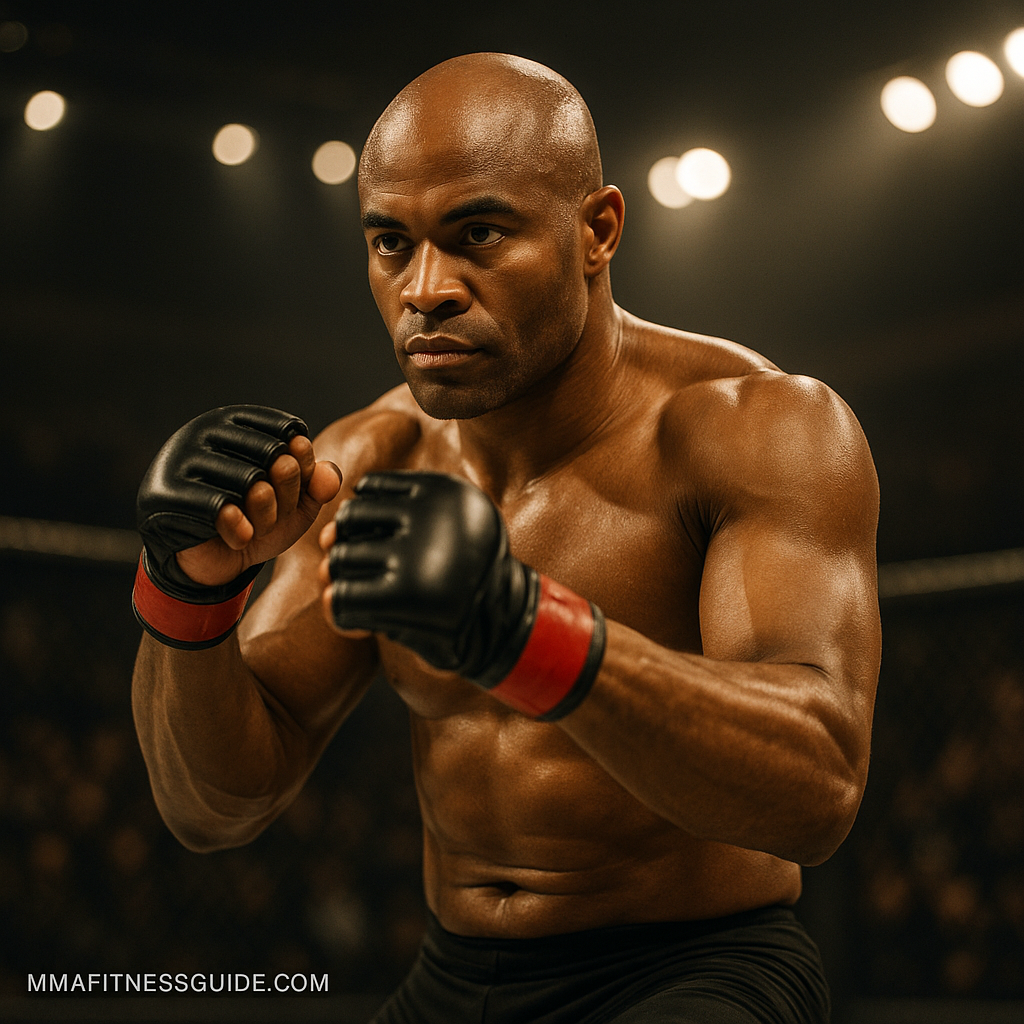
The Spider’s Story: From Humble Beginnings to MMA Greatness
Few fighters have defined an era quite like Anderson “The Spider” Silva.
Known for his lightning reflexes, fluid striking, and almost supernatural composure, Silva built a career that blurred the line between art and combat.
His story is not just one of victories and knockouts — it’s a story of discipline, adaptation, and an unbreakable belief in self-expression through martial arts.
From the Streets of Brazil to the World Stage
Born in São Paulo, Brazil, Silva grew up in modest conditions and first trained in taekwondo and capoeira, later adding Muay Thai, boxing, and Brazilian Jiu-Jitsu.
That wide foundation gave him the creative, unpredictable style that became his trademark.
By the time he entered MMA in the late 1990s, Silva already fought like no one else — hands low, precise counters, calm under fire. His background made him adaptable and fearless against any opponent.
Dominance in the UFC
When Anderson Silva debuted in the UFC in 2006, he shocked the world by knocking out Chris Leben in under a minute.
Two months later, he captured the Middleweight Championship by defeating Rich Franklin with a masterclass in Muay Thai clinch strikes.
What followed was one of the most dominant title reigns in MMA history:
- 10 title defenses — the most in UFC middleweight history
- 16-fight winning streak — spanning seven years
- Victories over legends such as Dan Henderson, Vitor Belfort, Chael Sonnen, and Forrest Griffin
Silva wasn’t just winning; he was redefining the sport. His timing, creativity, and confidence turned the cage into a stage for expression.
The Art of Precision
Silva’s genius lay in his economy of motion — no wasted movement, no panic, just patience and timing.
He studied opponents mid-fight, waiting for an opening and then striking with surgical accuracy.
His knockout of Vitor Belfort via front kick to the face became one of MMA’s most iconic moments — a snapshot of perfection born from composure and intuition.
Even when pressured, Silva never fought emotionally. He demonstrated what every martial artist seeks: control over self before control over others.
Adversity and Redemption
Like all great champions, Silva faced setbacks.
His shocking loss to Chris Weidman in 2013 — followed by a leg-break rematch — reminded the world that greatness doesn’t mean invincibility.
But Silva’s return from injury, even in defeat, showed what truly defines a fighter: resilience.
He continued competing well into his 40s, later transitioning to boxing and inspiring a new generation to evolve beyond limits.
Legacy Beyond the Octagon
Anderson Silva’s impact goes beyond his record.
He brought artistry to MMA — merging traditional martial arts philosophy with modern combat.
His humility, creativity, and respect for opponents helped legitimize MMA as both a sport and an expression of discipline.
Today, fighters like Israel Adesanya and Alex Pereira openly credit Silva for influencing their striking styles and mental approach to fighting.
As Silva himself said,
“Martial arts is not about fighting; it’s about building character.”
What Fighters Can Learn from Anderson Silva
- Patience is power. The best strike is the one you wait for.
- Adaptability beats predictability. Train in multiple styles and stay fluid.
- Stay humble in victory and defeat. Both are teachers.
- Use creativity as a weapon. Fighting is an art form — express it.
The Spider’s Legacy
Anderson Silva may no longer rule the UFC, but his influence continues to echo in every fighter who values precision, balance, and humility.
He showed the world that fighting is more than brute force — it’s the poetry of timing, movement, and willpower.
His rise wasn’t just a climb to the top — it was the evolution of MMA itself.
